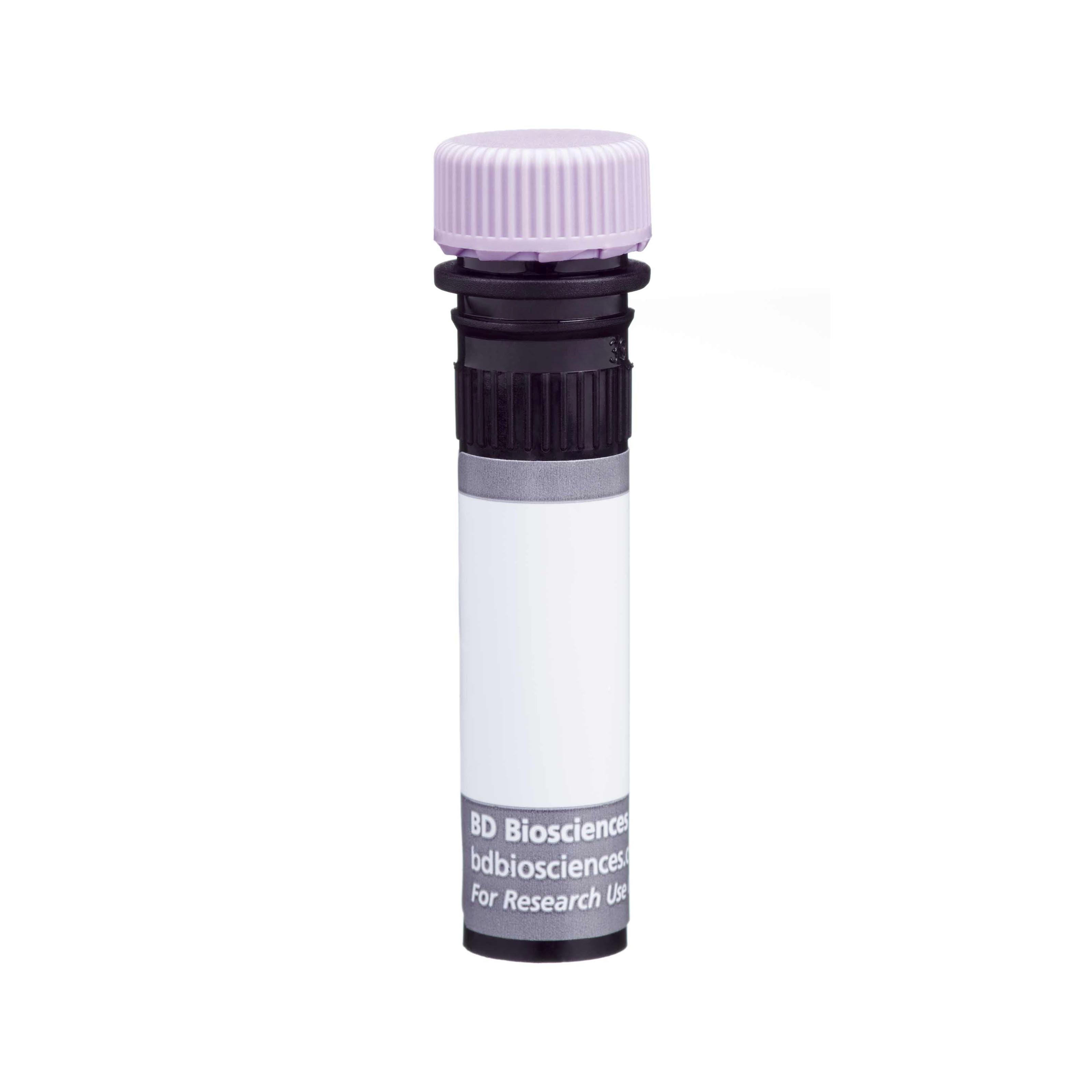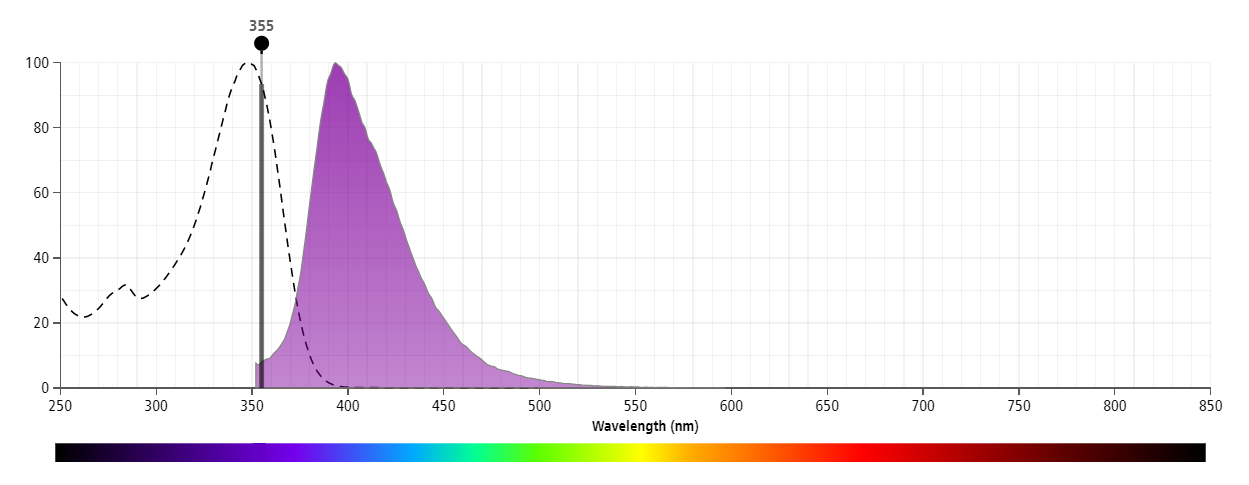Old Browser
This page has been recently translated and is available in French now.
Looks like you're visiting us from {countryName}.
Would you like to stay on the current country site or be switched to your country?




Multicolor flow cytometric analysis of CCR9 (CD199) expression on human peripheral blood mononuclear cells. Human PBMCs were stained with PE Mouse Anti-Human CD4 antibody (Cat. No. 555347/561843/561844) and BD Horizon™ BUV395 Mouse IgG1, κ Isotype Control (Cat. No. 563547; Left Plot) or BD Horizon™ BUV395 Mouse Anti-Human CCR9 (CD199) antibody (Cat. No. 567978/567979; Right Plot). DAPI (4',6-Diamidino-2-Phenylindole, Dihydrochloride) Solution (Cat. No. 564907) was added to cells right before analysis. Bivariate pseudocolor density plots showing the correlated expression of CCR9 (CD199) [or Ig Isotype control staining] versus CD4 were derived from gated events with the forward and side light-scatter characteristics of viable (DAPI-negative) lymphocytes. Flow cytometry and data analysis was performed using a BD LSRFortessa™ X-20 Cell Analyzer System and FlowJo™ software.


BD Horizon™ BUV395 Mouse Anti-Human CCR9 (CD199)

Regulatory Status Legend
Any use of products other than the permitted use without the express written authorization of Becton, Dickinson and Company is strictly prohibited.
Preparation And Storage
Recommended Assay Procedures
BD® CompBeads can be used as surrogates to assess fluorescence spillover (Compensation). When fluorochrome-conjugated antibodies are bound to BD® CompBeads, they have spectral properties very similar to cells. However, for some fluorochromes there can be small differences in spectral emissions compared to cells, resulting in spillover values that differ when compared to biological controls. It is strongly recommended that when using a reagent for the first time, users compare the spillover on cells and BD® CompBeads. This will ensure that BD® CompBeads are appropriate for your specific cellular application.
For optimal and reproducible results, BD Horizon Brilliant™ Stain Buffer should be used anytime BD Horizon Brilliant™ dyes are used in a multicolor flow cytometry panel. Fluorescent dye interactions may cause staining artifacts which may affect data interpretation. The BD Horizon Brilliant™ Stain Buffer was designed to minimize these interactions. When BD Horizon Brilliant™ Stain Buffer is used in in the multicolor panel, it should also be used in the corresponding compensation controls for all dyes to achieve the most accurate compensation. For the most accurate compensation, compensation controls created with either cells or beads should be exposed to BD Horizon Brilliant™ Stain Buffer for the same length of time as the corresponding multicolor panel. More information can be found in the Technical Data Sheet of the BD Horizon Brilliant™ Stain Buffer (Cat. No. 563794/566349) or the BD Horizon Brilliant™ Stain Buffer Plus (Cat. No. 566385).
Product Notices
- Please refer to www.bdbiosciences.com/us/s/resources for technical protocols.
- Source of all serum proteins is from USDA inspected abattoirs located in the United States.
- Caution: Sodium azide yields highly toxic hydrazoic acid under acidic conditions. Dilute azide compounds in running water before discarding to avoid accumulation of potentially explosive deposits in plumbing.
- This reagent has been pre-diluted for use at the recommended Volume per Test. We typically use 1 × 10^6 cells in a 100-µl experimental sample (a test).
- For fluorochrome spectra and suitable instrument settings, please refer to our Multicolor Flow Cytometry web page at www.bdbiosciences.com/colors.
- An isotype control should be used at the same concentration as the antibody of interest.
- BD Horizon Brilliant Ultraviolet 395 is covered by one or more of the following US patents: 8,158,444; 8,575,303; 8,354,239.
- BD Horizon Brilliant Stain Buffer is covered by one or more of the following US patents: 8,110,673; 8,158,444; 8,575,303; 8,354,239.
- Please refer to http://regdocs.bd.com to access safety data sheets (SDS).
- Human donor specific background has been observed in relation to the presence of anti-polyethylene glycol (PEG) antibodies, developed as a result of certain vaccines containing PEG, including some COVID-19 vaccines. We recommend use of BD Horizon Brilliant™ Stain Buffer in your experiments to help mitigate potential background. For more information visit https://www.bdbiosciences.com/en-us/support/product-notices.
Companion Products



The C9Mab-1 monoclonal antibody specifically binds to Chemokine (C-C motif) receptor 9 (CCR9), which is also known as CD199. CCR9 is an ~42 kDa seven-transmembrane protein in the G protein-coupled receptor (GPCR) supergene family. It is upregulated by CD4+CD8+ double-positive thymocytes, then downregulated in committed CD4+ or CD8+ single-positive thymocytes. CCR9 is also expressed on small intestinal B cells, subsets of memory CD4+ T cells and CD8+ T cells, and dendritic cells. CCR9 binds CCL25, which is also known as thymus-expressed chemokine (TECK) or small inducible chemokine 25 (Scya25). CCL25 is highly expressed in the thymic cortex and small intestinal epithelium. CCR9 is involved in T cell development and gut-associated immune functions via lymphocyte recruitment to the gastrointestinal tract.

Development References (4)
-
Olaussen RW, Farstad IN, Brandtzaeg P, Rugtveit J. Age-related changes in CCR9+ circulating lymphocytes: are CCR9+ naive T cells recent thymic emigrants?. Scand J Immunol. 2001; 54(5):435-9. (Biology). View Reference
-
Papadakis KA, Prehn J, Nelson V, et al. The role of thymus-expressed chemokine and its receptor CCR9 on lymphocytes in the regional specialization of the mucosal immune system.. J Immunol. 2000; 165(9):5069-76. (Biology). View Reference
-
Wurbel MA, Malissen B, Campbell JJ. Complex regulation of CCR9 at multiple discrete stages of T cell development. Eur J Immunol. 2006; 36(1):73-81. (Biology). View Reference
-
Zabel BA, Agace WW, Campbell JJ, et al. Human G protein-coupled receptor GPR-9-6/CC chemokine receptor 9 is selectively expressed on intestinal homing T lymphocytes, mucosal lymphocytes, and thymocytes and is required for thymus-expressed chemokine-mediated chemotaxis.. J Exp Med. 1999; 190(9):1241-1256. (Biology). View Reference
Please refer to Support Documents for Quality Certificates
Global - Refer to manufacturer's instructions for use and related User Manuals and Technical data sheets before using this products as described
Comparisons, where applicable, are made against older BD Technology, manual methods or are general performance claims. Comparisons are not made against non-BD technologies, unless otherwise noted.
For Research Use Only. Not for use in diagnostic or therapeutic procedures.
Report a Site Issue
This form is intended to help us improve our website experience. For other support, please visit our Contact Us page.